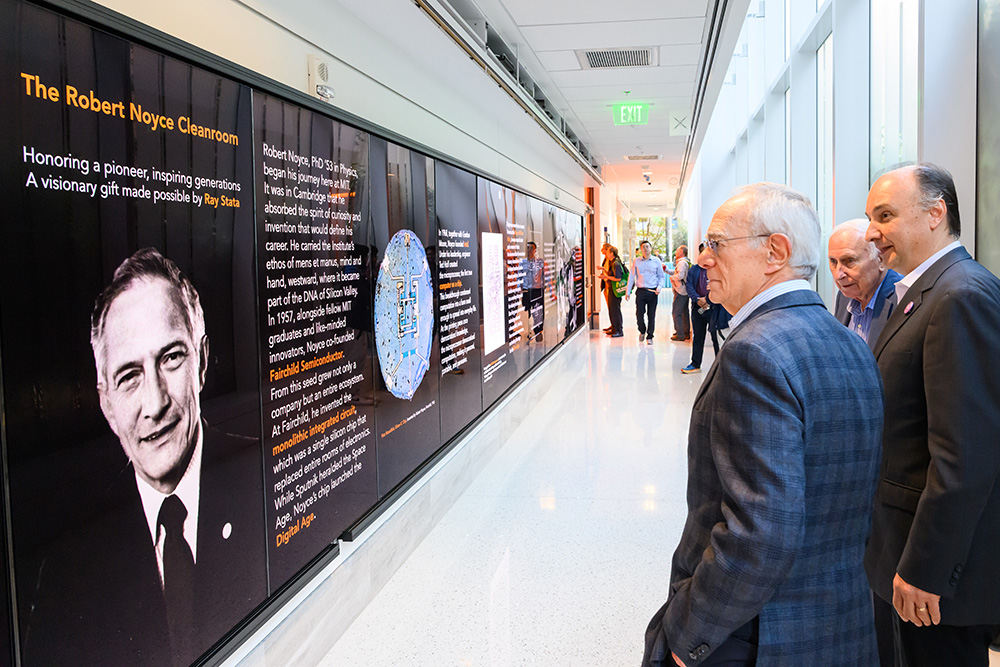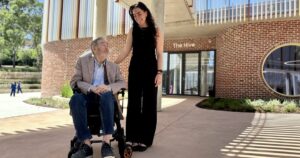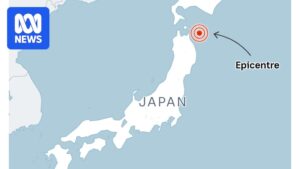
Nikon Z9 Camera
“MIT.nano is essential to making progress in high-priority areas where I believe that MIT has a responsibility to lead,” opened MIT President Sally Kornbluth at the 2025 Nano Summit. The event, held at the Massachusetts Institute of Technology, focused on the transformative potential of nanoscience and nanotechnology across MIT’s strategic initiatives. These projects are deemed critical to the institution’s mission of addressing some of the world’s most pressing challenges.
The summit featured a series of discussions that underscored the importance of interdisciplinary collaboration, the scalability of solutions from laboratory to market, and the potential of nanoscale science to drive large-scale change. “MIT.nano has truly set itself apart, in the Institute’s signature way, with an emphasis on cross-disciplinary collaboration and open access,” Kornbluth noted. The event aimed to showcase how working with the very small can lead to significant global impacts.
Collaborating on Health
The first session, led by Angela Koehler, faculty director of the MIT Health and Life Sciences Collaborative (MIT HEALS), focused on building a community across campus to tackle transformative problems in human health. Three speakers presented their pioneering work in medicine, each highlighting the role of nanotechnology in advancing healthcare.
Ana Jaklenec, a principal research scientist at the Koch Institute for Integrative Cancer Research, discussed the development of single-injection vaccines. Her team leveraged techniques from electrical engineering to create tiny devices for the pharmaceutical industry. “MIT.nano was instrumental in helping us develop this technology,” she said.
Meanwhile, Giovanni Traverso, a gastroenterologist and professor of mechanical engineering, drew inspiration from nature to design ingestible drug delivery systems. On the industry side, Jagesh Shah of Mirai Bio emphasized the need for collaboration between academia and industry to make meaningful impacts, particularly in precision-targeted lipid nanoparticles for therapeutic delivery.
Manufacturing: From Classroom to Workforce
The second session highlighted MIT’s Initiative for New Manufacturing (MIT INM). A. John Hart, co-director of MIT INM, emphasized the importance of understanding the manufacturing landscape both domestically and globally. “It’s about getting people – our graduates who are budding enthusiasts of manufacturing – out of campus and starting and scaling new companies,” he said.
Dan Oran, a PhD graduate and founder of Irradiant Technologies, shared his journey from academia to entrepreneurship. Elisabeth Reynolds, a professor at MIT, discussed the challenges of scaling innovations from prototype to production, noting that the U.S. capital market has historically struggled to support such transitions.
John Liu, a principal research scientist, proposed the creation of a new worker type in advanced manufacturing – the technologist – to bridge the gap between technicians and engineers. This approach aims to maintain a steady flow of new ideas from classrooms to factory floors.
Bridging Ecosystems with Nanoscience
Benedetto Marelli, mission director for the MIT Climate Project, stressed the need for interdisciplinary collaboration to impact climate change effectively. “We need to take care of ecology, health, mobility, the built environment, food, energy, policies, and trade and industry – and think about these as interconnected topics,” he remarked.
Faculty speakers showcased nanoscale solutions for climate resiliency. Michael Strano discussed using nanoparticles to convert waste methane and urea into renewable materials. Desirée Plata highlighted the scaling of carbon dioxide removal systems, while Kripa Varanasi focused on improving agricultural spraying to reduce pollution and costs.
These presentations underscored the link between climate and the economy. “The economic systems that we have today are depleting to our resources, inherently polluting,” Plata emphasized, advocating for sustainable design to transition the global economy.
MIT.nano: A Hub for Innovation
MIT.nano plays a crucial role in facilitating these innovations, offering shared access facilities where researchers can design solutions to global challenges. Jorg Scholvin, associate director for Fab.nano, highlighted the diverse work at MIT.nano, from 3D transistors and quantum devices to solar solutions and art restoration.
The enthusiasm of researchers at the summit reflected the excitement and curiosity that President Kornbluth mentioned in her opening remarks. “The solutions to the problems we heard about today may come from inventions that don’t exist yet,” said Strano, emphasizing the creative potential within MIT.
The summit concluded with President Emeritus L. Rafael Reif announcing the dedication of the MIT.nano cleanroom complex, named the Robert N. Noyce (1953) Cleanroom. This facility, made possible by a gift from Ray Stata, honors the legacy of Robert Noyce, a pioneer of the semiconductor industry.
“Noyce was a pioneer of the semiconductor industry,” said Stata. “It is due to his leadership and remarkable contributions that electronics technology is where it is today.” The dedication of the cleanroom marks a new chapter for MIT.nano, poised to continue shaping the future of nanotechnology and nurturing the next generation of innovators.







